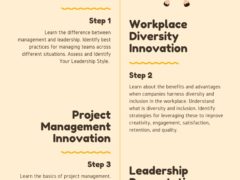[youtube=https://youtu.be/tWG93d6DsBU]
The steps towards Building a Nonprofit Organization will vary depending on your organization’s location. Despite the different steps identified per country there remain many shared steps which we’ll discuss below:

- Step One – Incorporating as a Nonprofit: Identify what type of corporation you want to create and submit the appropriate forms, documents, and information to the relevant government office (and pay relevant fees). Note, the following steps emphasize organizations incorporating as a nonprofit.
- Step Two – On-boarding & Developing New Board Members: Recruit, engage, develop, and on-board the organizations Board Members.
The next step is to prepare the organization’s constitution & bylaws (and Mission, Vision, & Values Statements). This would typically be put together with the help (or sometimes exclusively, on their own) of your board. For nonprofits, the board members are volunteers that are invested in your mission. The following ‘roles’ should be included in your organization’s Board:
- President
- Vice President
- Secretary
- Treasurer
- Ideally, it’s great to also have someone that fills the role for Fundraising/Public Relations (and they could help you with your fundraising projects!)
A great website to help with building your organization’s Board can be found here: http://managementhelp.org/boards/
Committees are formed from these roles (and include other members of the board) and typically include:
- Governance Committee
- Finance Committee
- And ideally, a Fundraising Committee
Other committees are also formed depending on the organizations industry, and needs. Such as:
- Human Resources Committee
- Quality Assurance/Audit Committee
‘Types’ of Boards
Keep in mind that there are ‘volunteer boards’ – that help out quite a bit, but Canada has been moving more towards ‘Governance Boards’ – which focus on strategy and oversight. I currently sit on a governance board, but recognize the pros/cons of each. Board governance follows a set of standardized rules for decision making. You can find a copy of Bourinot’s Rules of Order here: http://www.cep6006.ca/Bourinot’s-Rules-of-Order.pdf
- Step Three – Drafting Agency Constitution, Mission, & Bylaws: With the help & leadership of the Board, draft the organization’s governing documents and submit to the relevant government office along with your application for the Charity Tax Status.
Ideally, you have board members who are experts in the above roles. In addition, a lawyer is also great to have on the committee as well.
Other areas of specialization include child welfare, education, nonprofits, leadership, human resources, etc. Once the board is formed, the board members typically take on the lead for recruiting future members. The term for board positions is 2 years, although many may choose to stay on longer. The on-boarding process includes interviews, and the BOARD vote (requires a quorum to elect a new member). The Board technically supervises the CEO/Founder, and emphasizes strategic initiatives. Typically, the CEO otherwise has the discretion to handle Operational issues on their own (with some consultation with the Board, if needed).
With a new organization it is often recommended to begin recruiting those board members who specialize in policy and understanding the legislation of the New Societies Act of BC (as well as the organization’s area of focus). In addition to identifying requirements around the organization’s Constitution & Bylaws, The New Societies Act of BC also informs the steps to incorporate as a nonprofit. The link to the BC Act is here:
http://www.bcregistryservices.gov.bc.ca/bcreg/societiesact/index.page
http://www.bcregistryservices.gov.bc.ca/bcreg/corppg/reg20.page
There are some new updates to the Act this year, so you will see some language mentioning the ‘transition.’ The transition can largely be explained and transitioning from paper filing/copies to digital filing/online. There are a few other details as well, but the Board’s first step might be simply to take a look at this page to determine how to put the Constitution & Bylaws together (and where/how to file them).
Having a nonprofit board has a lot of advantages, but can become a little political. That’s the life of all nonprofit execs, I’ll admit. But if carefully engaged during the initial forming stages of your organization – they can also be very helpful to get the documentation and policies in order.
- Step Four – Applying for Charity Tax Status: Apply for the organization’s Charity Tax Status. Once approved this tax status allows pursuing funding opportunities not available to For Profit businesses.
Included below are a few additional links for grant seekers to help get the process started:
General Resources:
http://www.techsoupcanada.ca/learning_center/articles/grant_seeking
http://www.imaginecanada.ca/grant-connect
Nonprofit grants will require a letter and charity number verifying your organization’s tax status. The links above should also provide suggestions regarding how to complete grants, etc.
The key challenge will be to identify grants that provide funding for the exact purpose you are looking for (a challenge all organizations face). Since there is often quite a bit of tracking and reporting requirements for each grant most organizations prefer to target larger grants to justify the time and effort.
Included are a few links below that might be relevant to organizations in BC searching for grants and other funding resources. Please refer to your local government’s websites for links and additional information for organizations in other locations.
General Resources:
http://www.techsoupcanada.ca/learning_center/articles/grant_seeking
http://www.imaginecanada.ca/grant-connect
Nonprofit grants will require a letter and charity number verifying your organization’s tax status. The links above should also provide suggestions regarding how to complete grants, etc.
The key challenge will be to identify grants that provide funding for the exact purpose you are looking for (a challenge all organizations face). Since there is often quite a bit of tracking and reporting requirements for each grant most organizations prefer to target larger grants to justify the time and effort.
Organizations may also want to consider pursuing other traditional funding vehicles prior to a nonprofit securing their Charity Tax Number. The funding available to an organization will depend on the business’ status.
Here are a few additional resources. Please refer to your local government websites for options available in other regions.
BC Business Grants
http://www2.gov.bc.ca/gov/content/employment-business/economic-development/funding-and-grants
http://www.womensenterprise.ca/business_loans
General Information
http://smallbusinessbc.ca/article/how-finance-your-start-business/
Beginning with an aligned culture of shared meaning and values is crucial for nonprofit organizations. The process of Incorporating as a Nonprofit and securing your organization’s Charity Tax Status is a lot of work. But the steps are worthwhile as they will set the foundation for the organization’s direction, vision, and future. With the organization’s Constitution, Bylaws, & Mission the agency staff has the guiding documents, values, and statements to build momentum.
Has your business recently been involved in Building a Nonprofit Organization? Share your insights with the group below. Note – this article is a draft and will be updated and more information and resources are identified.
A copy of a presentation on the New Societies Act of BC is available for download online.
Pro-Bono consulting also available for eligible nonprofits. Contact us for more information.
Travis Barker, MPA GCPM
Innovate Vancouver
[email protected]
http://twitter.com/innovatevan
Innovate Vancouver is a business development & consulting service and technology startup located in Vancouver, BC. Contact Innovate Vancouver to help with your new project. Innovate Vancouver also gives back to the community through business consulting services. Contact us for more details.





